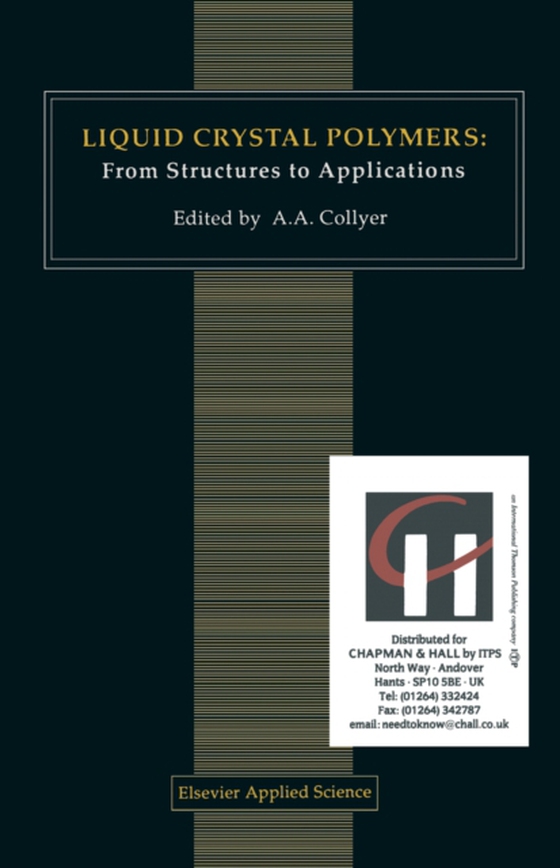
Liquid Crystal Polymers: From Structures to Applications e-bog
436,85 DKK
(inkl. moms 546,06 DKK)
The subject of liquid crystals and their use in electronic displays and in non-linear optical systems has become of tremendous importance during the last decade; and the incorporation of liquid crystal units into polymeric materials has led to a group of new materials with diverse properties. Some of these properties have been utilized in new products and some have yet to be used. Much publishe...
E-bog
436,85 DKK
Forlag
Springer
Udgivet
6 december 2012
Genrer
Industrial chemistry and chemical engineering
Sprog
English
Format
pdf
Beskyttelse
LCP
ISBN
9789401118705
The subject of liquid crystals and their use in electronic displays and in non-linear optical systems has become of tremendous importance during the last decade; and the incorporation of liquid crystal units into polymeric materials has led to a group of new materials with diverse properties. Some of these properties have been utilized in new products and some have yet to be used. Much published work has appeared that deals with specific materials or particular applications, and it was felt that a book was needed to examine and explain the underlying principles governing the diverse properties of these liquid crystal polymers, LCPs. The current work describes the diverse nature of LCPs, their synthesis, characterization, properties and finally their applications. It describes the manner in which liquid crystallinity or mesomorphism occurs in small molecules, monomer liquid crystals and polymer liquid crystals. Chapter 1 gives a classification of the various ways in which the meso- gens may be connected to the polymer chains. Currently, the bulk of LCP material is based on main chain or longitudinal LCPs for use in engineering applications. The side chain or comb polymers are intended for use in electronics and opto-electronic systems and as surfactants. Many other variants and possibilities exist but their properties have not yet been fully studied or used. In this respect it is hoped that the current work will indicate future possibilities as well as discussing current opinion. v Preface vi Chapters 2 and 3 describe methods of characterizing the mesophases.
 Dansk
Dansk

